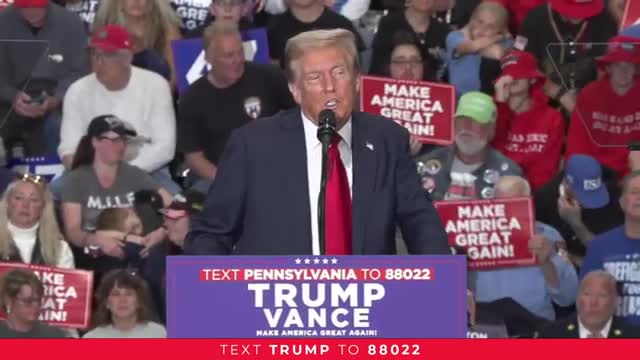Kamala Harris plan could raise taxes by over 26000 a year
October 10, 2024 | Donald J. Trump, Presidential Candidates 2024
This article was created by AI summarizing key points discussed. AI makes mistakes, so for full details and context, please refer to the video of the full meeting. Please report any errors so we can fix them. Report an error »

In a recent government meeting, discussions centered around tax policy and economic strategies, highlighting stark contrasts between the current administration's approach and that of former President Donald Trump. Trump criticized proposed tax increases by Vice President Kamala Harris, claiming they would burden families with an additional $26,100 annually. He emphasized his commitment to tax cuts, including eliminating taxes on tips, overtime, and Social Security benefits, asserting that his administration previously achieved significant tax reductions.
Trump proposed lowering the corporate tax rate from 21% to 15% for companies manufacturing in the U.S., aiming to incentivize domestic production and job creation. He argued that such measures would restore economic strength and competitiveness, countering what he described as a decline in American prosperity. He also mentioned implementing tariffs on foreign companies that do not produce goods in the U.S., framing it as a necessary step to protect American jobs and wealth.
The former president's remarks included a historical perspective on tariffs, suggesting that the U.S. thrived during periods of high tariffs in the late 19th and early 20th centuries. He criticized current trade practices, particularly with China, claiming they have exploited American resources and wealth.
Overall, the meeting underscored a clear divide in economic philosophy, with Trump advocating for tax cuts and protectionist measures, while his opponents are perceived as favoring tax increases to fund government initiatives. The implications of these discussions could significantly influence upcoming policy decisions and the political landscape as the nation approaches future elections.
Trump proposed lowering the corporate tax rate from 21% to 15% for companies manufacturing in the U.S., aiming to incentivize domestic production and job creation. He argued that such measures would restore economic strength and competitiveness, countering what he described as a decline in American prosperity. He also mentioned implementing tariffs on foreign companies that do not produce goods in the U.S., framing it as a necessary step to protect American jobs and wealth.
The former president's remarks included a historical perspective on tariffs, suggesting that the U.S. thrived during periods of high tariffs in the late 19th and early 20th centuries. He criticized current trade practices, particularly with China, claiming they have exploited American resources and wealth.
Overall, the meeting underscored a clear divide in economic philosophy, with Trump advocating for tax cuts and protectionist measures, while his opponents are perceived as favoring tax increases to fund government initiatives. The implications of these discussions could significantly influence upcoming policy decisions and the political landscape as the nation approaches future elections.
View full meeting
This article is based on a recent meeting—watch the full video and explore the complete transcript for deeper insights into the discussion.
View full meeting